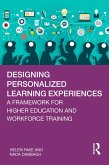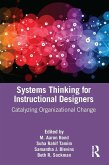Learning is a complex activity, and while no one really understands exactly how we learn, there are countless theories that attempt to provide a framework for the process. I call my theory of learning "Trilogy of the Mind" because it involves the mind's affective, cognitive and conative domains. These domains encompass how we feel, how we think and how we do what we do. Because visuals can stimulate both the affective and cognitive domains, we can use visuals not only to influence thinking but to stimulate emotional connections as well.
Learning can be affected by three very influential areas: prior knowledge, context and expectations. Prior knowledge provides the hooks on which we can hang new knowledge. Every thought we think is like an item of clothing you are hanging in a closet. Should you keep it? Does it go with what is already in there? Does it fit? Context, on the other hand, provides relevance. It provides a way of anchoring the new within an environment by giving importance, significance, application and weight to an experience. Last but not least, expectations are our beliefs about the future. Expectations of knowing can take the form of knowing what or knowing how. In either case expectations are established by patterns of what we believe to be true or real in our brains. Learning takes place when we expand upon or build upon what we already know. Visuals can act as stimuli that activate associations to prior knowledge, context and experiences.
Most of us are predominantly visual learners. The term visual learner comes from NLP or Neural Linguistic Programming and the VAK model. The VAK model attempts to describe learning in terms of three dominant styles: visual, auditory and kinesthetic. It offers a way to present stimuli that is tailored to the ways in which an individual prefers to take in information. The jury is still out, however, as to the actual impact of learning styles on learning outcomes.
Here is what I would like you to be able to do after reading this book:
Recognize good visual design for learning.
Create well-designed visual learning interfaces.
Appreciate what makes visual design for learning special.
Develop a visual strategy for your projects that supports learning.
Dieser Download kann aus rechtlichen Gründen nur mit Rechnungsadresse in A, B, CY, CZ, D, DK, EW, E, FIN, F, GR, H, IRL, I, LT, L, LR, M, NL, PL, P, R, S, SLO, SK ausgeliefert werden.









